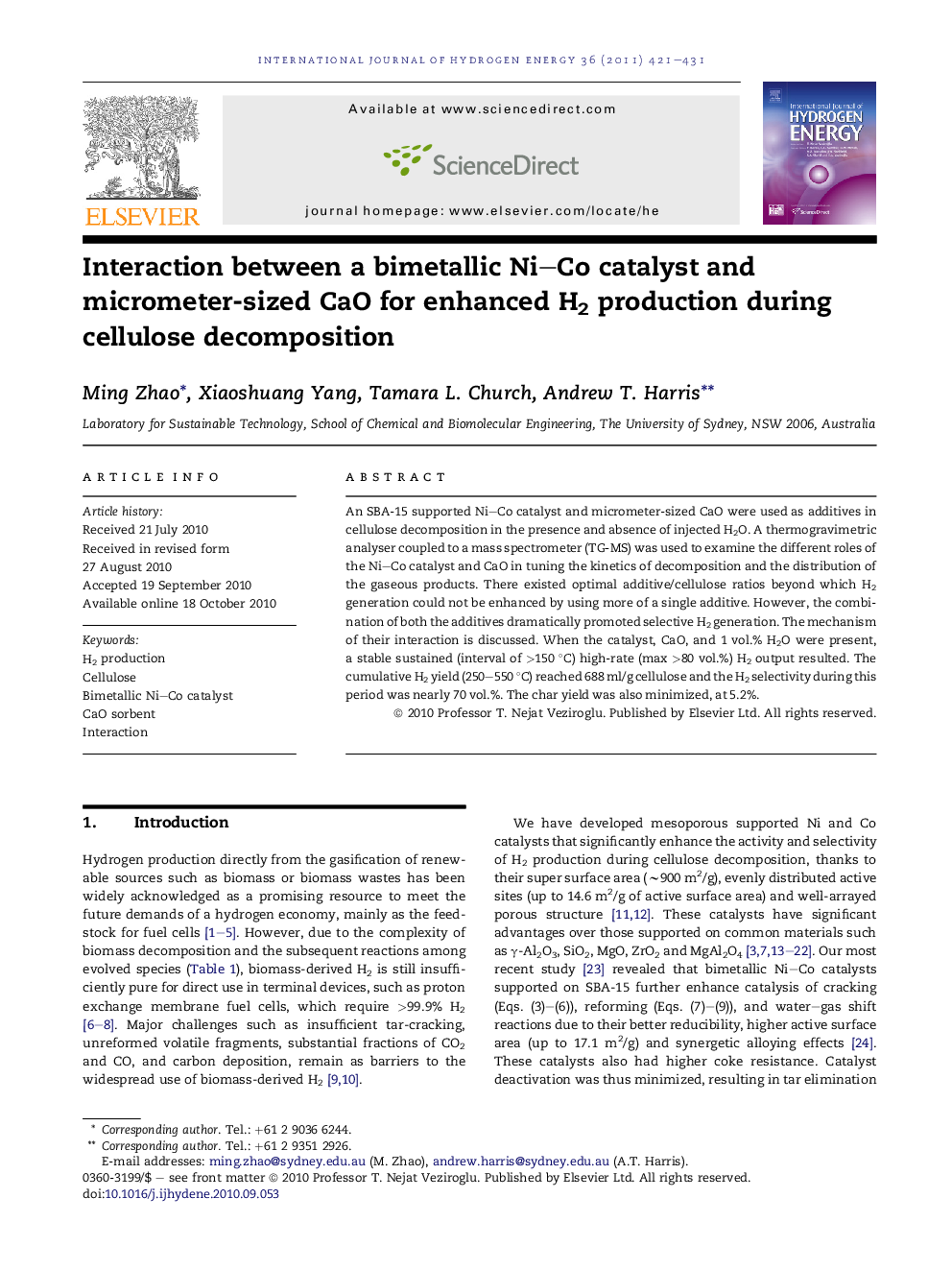| Article ID | Journal | Published Year | Pages | File Type |
|---|---|---|---|---|
| 1277792 | International Journal of Hydrogen Energy | 2011 | 11 Pages |
An SBA-15 supported Ni–Co catalyst and micrometer-sized CaO were used as additives in cellulose decomposition in the presence and absence of injected H2O. A thermogravimetric analyser coupled to a mass spectrometer (TG-MS) was used to examine the different roles of the Ni–Co catalyst and CaO in tuning the kinetics of decomposition and the distribution of the gaseous products. There existed optimal additive/cellulose ratios beyond which H2 generation could not be enhanced by using more of a single additive. However, the combination of both the additives dramatically promoted selective H2 generation. The mechanism of their interaction is discussed. When the catalyst, CaO, and 1 vol.% H2O were present, a stable sustained (interval of >150 °C) high-rate (max >80 vol.%) H2 output resulted. The cumulative H2 yield (250–550 °C) reached 688 ml/g cellulose and the H2 selectivity during this period was nearly 70 vol.%. The char yield was also minimized, at 5.2%.
